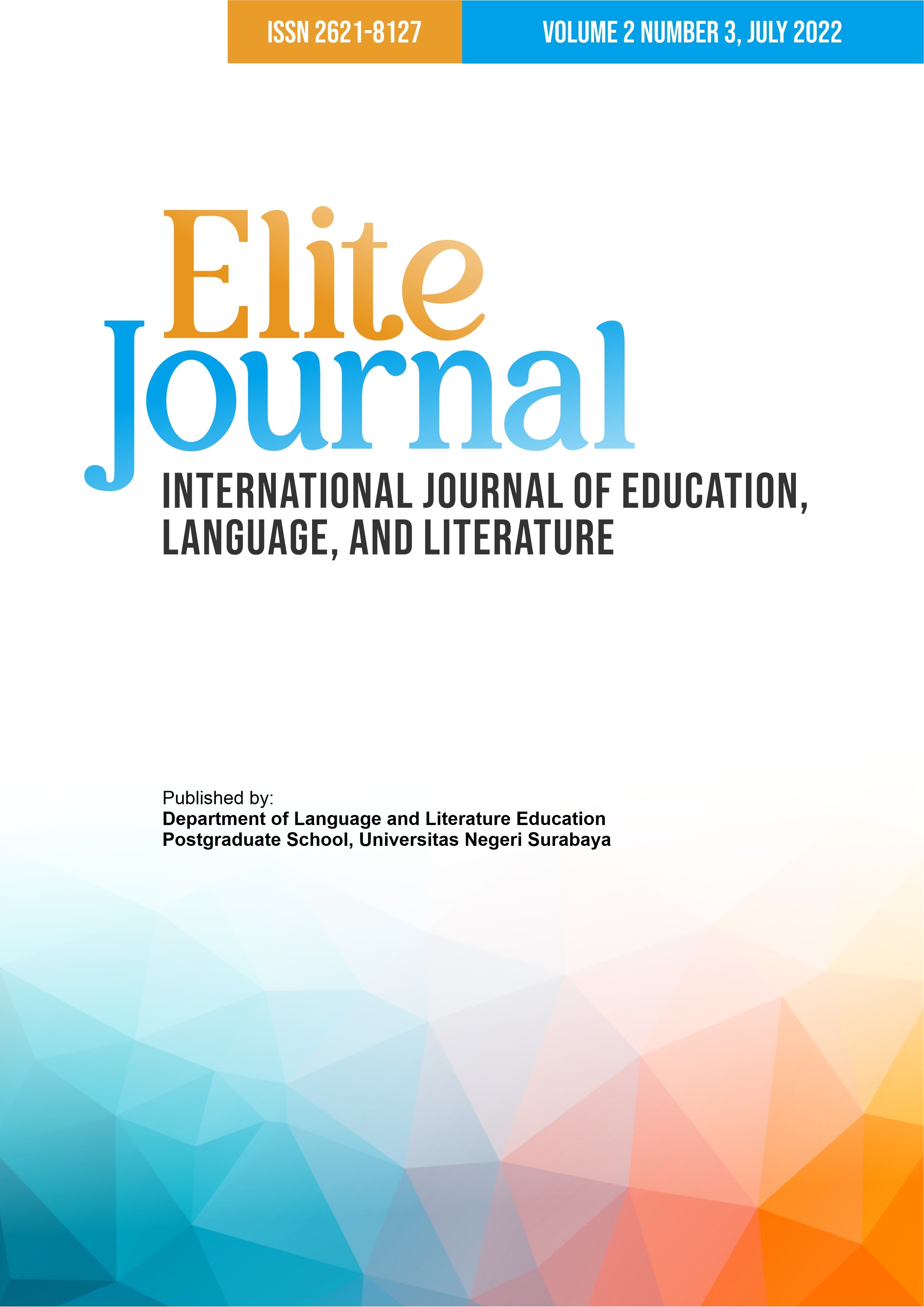SPREAD OF TOXIC SPEECH THROUGH PEJORATIVE WORDS ON TWITTER DURING CORONAVIRUS OUTBREAK
DOI:
https://doi.org/10.26740/elitejournal.v2n3.p137-147Keywords:
toxic speech, pejorative words, Twitter, cyberculture, coronavirusAbstract
This research aims to convince the existence of toxic speech on social media, especially on Twitter, and its effect on the internet citizen mindset that can construct new culture on how people use language on Twitter during the coronavirus outbreak. The research problems of this study are the kind of toxic speech frequently used on Twitter, how toxic speech containing pejorative words spreads, and how it shapes Twitter cyberculture. This study utilized Tirrell and Ralston’s toxic-speech theory to define and classify the tweet. This study used qualitative research with non-participant observation and documentation as the data collection technique. The data obtained were a tweet about coronavirus from influential people containing the pejorative word. Then, the data were classified based on the toxicity level of the tweet that meets the toxic speech classification criteria combined with speech act theory and the LIWC program. The first analysis revealed the existence of toxic speech on Twitter and the type of toxic speech frequently found on Twitter. After classifying, ICM transmitted the whole tweet’s meaning by recognizing the pejorative words. This study found that toxic speech spreads on Twitter with the ratio of 2:1 for discursive morbidity is frequently found on Twitter. It also can shape the new culture on Twitter seen from the netizen response.
References
Chales J. Filmore. (2006). Frame Semantics.
Keifer, G., & Effenberger, F. (2014). Twitter and society. In Angewandte Chemie International Edition (Vol. 6).
Kumar, S., Morstatter, F., & Liu, H. (2013). Twitter data analytics. Springer, 89.
Langacker, R. W., & Lakoff, G. (1988). Women, fire, and dangerous things: What categories reveal about the mind. In Language (Vol. 64). https://doi.org/10.2307/415440
Litosseliti, L. (2010). Research Methods in Linguistics.
Ralston, S. J. (2018). Metaphor abuse in the time of coronavirus : A reply to Lynne Tirrell. Forthcoming in Southwest Philosophy Review.
Downloads
Published
How to Cite
Issue
Section
License
Copyright (c) 2022 Choirun Nisa

This work is licensed under a Creative Commons Attribution 4.0 International License.
 Abstract views: 294
,
Abstract views: 294
, PDF Downloads: 301
PDF Downloads: 301





